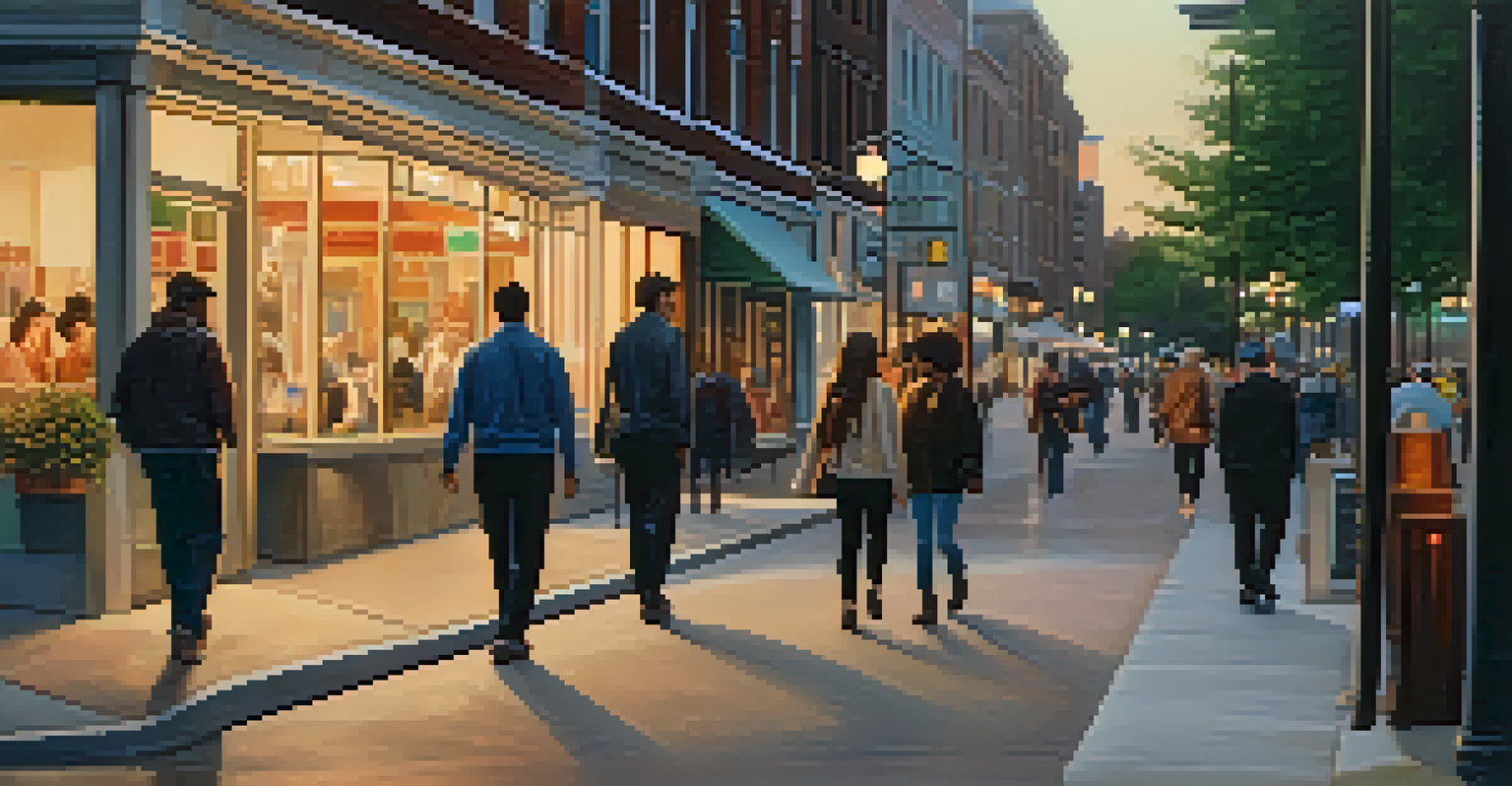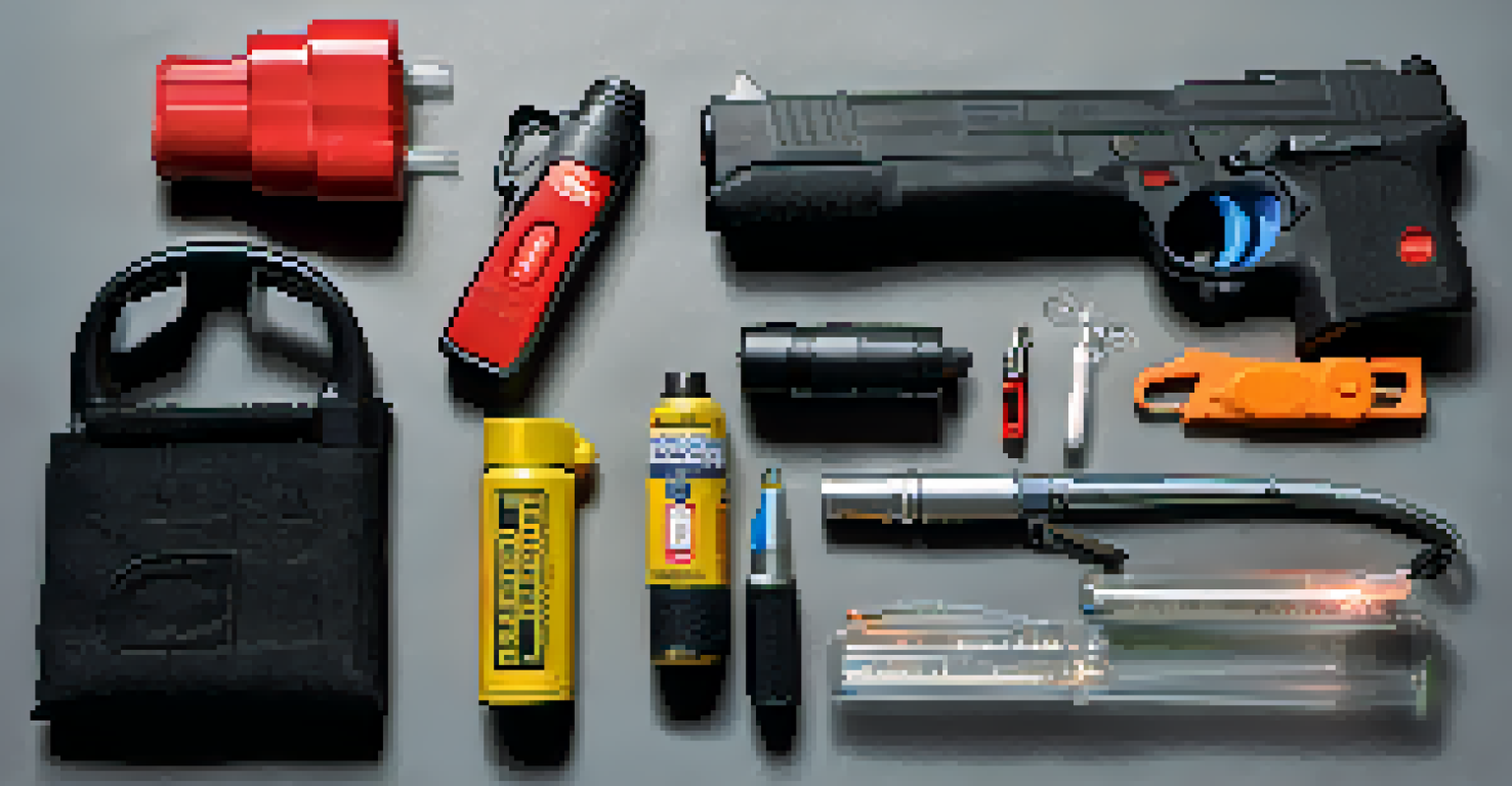Navigating Self Defense in High Crime Urban Neighborhoods

Understanding the Importance of Self Defense in Urban Areas
In urban neighborhoods with higher crime rates, self-defense becomes crucial for personal safety. It's not just about physical capability; it's about awareness and preparedness. Understanding your environment can significantly reduce risks and increase your confidence when navigating these areas.
Self-defense is not just a set of techniques; it’s a mindset that empowers you to take control of your safety.
Self-defense skills empower individuals to respond effectively in threatening situations. They can help you handle not only physical confrontations but also the psychological aspects of feeling safe. Knowing that you have the ability to protect yourself can drastically change how you interact with your surroundings.
Moreover, it's essential to remember that self-defense isn't solely about fight techniques. It's also about avoiding danger whenever possible. By being aware of your surroundings and identifying potentially risky situations, you can often prevent conflicts before they escalate.
Situational Awareness: Your First Line of Defense
Situational awareness is about observing your surroundings to identify potential dangers. Whether you're walking down the street or waiting for public transport, being aware can help you spot suspicious behavior early on. It’s like having a sixth sense that keeps you alert and ready.

Practicing situational awareness means paying attention to not just people but also the environment. Look for escape routes, potential safe spaces, and anything that seems out of place. This habit can significantly enhance your ability to react in a timely manner.
Self-Defense Enhances Personal Safety
Mastering self-defense techniques can significantly empower individuals to feel safe and respond effectively in potentially dangerous situations.
A great way to improve your situational awareness is to practice mindfulness. Take a moment to engage your senses: what do you hear, see, and feel? By grounding yourself in the present, you’ll be more likely to notice things that could pose a threat.
Essential Self Defense Techniques to Learn
Learning basic self-defense techniques can provide you with the skills needed to respond effectively during an attack. Consider enrolling in a self-defense class that focuses on practical moves rather than complex martial arts. Techniques like escape maneuvers, striking vulnerable areas, and using your environment can be incredibly effective.
The best defense is knowing your environment and being prepared for anything.
Real-life scenarios often require quick thinking and adaptability. For example, if someone grabs your wrist, a simple twist and step can break their grip. Practicing these techniques regularly will build muscle memory, making it easier to react instinctively when needed.
Additionally, incorporating self-defense into your physical fitness routine can be beneficial. Exercises that improve your strength, balance, and agility will enhance your ability to defend yourself, making you feel more capable in challenging situations.
The Role of Personal Safety Tools in Urban Areas
Personal safety tools can be invaluable in high-crime areas. Items like pepper spray, personal alarms, or tactical flashlights can provide an extra layer of protection. Carrying these tools helps you feel more secure and can deter potential threats.
When choosing personal safety tools, consider your comfort level and the legality of the item in your area. For example, pepper spray may be effective but may not be legal in all states. Always do your research to ensure you are compliant with local laws.
Situational Awareness is Key
Being aware of your surroundings helps identify potential threats early and can often prevent dangerous situations from escalating.
It's also important to know how to use these tools effectively. Taking a class on personal safety tools can ensure you're prepared to use them if needed. The more familiar you are with your tools, the less likely you are to panic in a stressful situation.
Creating a Safety Plan for Navigating High Crime Areas
Having a safety plan can make a world of difference when navigating high-crime neighborhoods. Start by mapping out the safest routes to your destination. Familiarize yourself with well-lit streets and areas that are frequented by other pedestrians.
In your safety plan, include emergency contacts and establish a check-in system with friends or family. Let someone know your whereabouts, especially if you’re traveling alone or at night. This simple step can add an extra layer of security.
Additionally, consider setting up a buddy system with friends or family. Traveling with someone can significantly reduce your chances of becoming a target. If you must travel alone, stay connected by keeping your phone handy and maintaining awareness of your surroundings.
Recognizing and Avoiding Potential Threats
Recognizing potential threats involves tuning into your instincts and observing body language. If someone seems overly aggressive or is loitering suspiciously, trust your gut feelings. It’s better to be cautious and change your route than to risk confrontation.
Avoiding potential threats also means being aware of your own behavior. Walking confidently, making eye contact, and being alert can deter would-be attackers. They often target those who appear distracted or vulnerable.
Community Support Boosts Safety
Engaging with local resources and community programs fosters connections that enhance personal safety and build a supportive network.
Moreover, be mindful of your belongings. Keep valuables tucked away and avoid displaying expensive items in public. This not only minimizes the chance of theft but also reduces your visibility as a target.
Seeking Community Resources and Support
Community resources can play a significant role in enhancing personal safety. Many neighborhoods have local organizations that offer self-defense classes, neighborhood watch programs, or safety workshops. Engaging with these resources can build a sense of community and foster connections with neighbors.
Additionally, consider connecting with local law enforcement. Many police departments offer safety seminars and are eager to collaborate with residents to improve neighborhood safety. Establishing a rapport with officers can also help you feel more secure in your area.

Finally, don’t hesitate to reach out for support when needed. Whether it’s joining local online forums or connecting with friends, sharing experiences and strategies can empower you and others. A supportive community can significantly enhance your confidence and sense of safety.